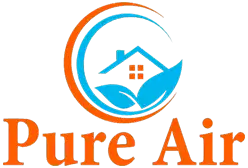A physical workout or any form of exercise is essential for the body to keep in shape and feel healthy. However, you might sometimes find it hard for a gym session or a morning run and that may be due to exercise intolerance.
Exercise intolerance poses difficulty in remaining active for a reasonable duration as the energy required to raise the heart rate is simply not produced. It can be common in patients suffering from health conditions like cystic fibrosis or diastolic heart failure, but it can also develop in fit and healthy men and women.
Indoor mold exposure can cause significant breathing and energy problems and can even cause nausea, sudden respiratory issues, or even fatigue, making you feel inactive and out of shape. Any of these factors can seriously harm your ability to get in high quality workouts to achieve your fitness goals.
How Does Mold Affect You Physically?
The Centers for Disease Control and Prevention (CDC) reports that indoor mold exposure can lead to health issues such as
- itchy eyes
- throat pain
- coughing
- wheezing
- exercise intolerance
The mold body symptoms are usually mild initially and increase over time. The toxic mold spores make breathing difficult as the oxygen in the lungs and bloodstream decreases. As a result, the muscles lose the ability to utilize oxygen efficiently and metabolize nutrients to generate sufficient energy for exercise.
Short-Term Symptoms of Mold Illness
The short-term mold illness body symptoms include:
- Coughing
- Breath Shortness or Wheezing
- Headaches
- Rashes and itchy skin
- Asthma attacks
- Snoring at night in people who previously didn’t
- Difficulty in physical activity and exercise
Long-Term Symptoms of Mold Illness
The long-term body symptoms of mold exposure are far more serious and include the following:
- Development of asthma symptoms in people previously not exposed to such problems
- Chronic sore throats
- Chronic sinus infections
- Bleeding in lungs
- Depression
- Memory loss
- Chronic inflammatory response syndrome
- Pneumonia or bronchitis
You must consult a doctor for treatment if you see mold symptoms lasting more than a few weeks. Treatment depends upon specific mold symptoms like bronchitis requiring antibiotics, whereas antihistamines are used for allergy-like symptoms.
Can Your Home Be Holding You Back From Your Fitness Goals?
Yes, if you are working out at home, your home may be the reason you are not hitting your fitness goals! Mold presence in the home and health side effects of exposure can seriously affect your fitness routine, and therefore your fitness goals.
The side effects of mold exposure, such as
- Coughing
- breathing difficulty
- watery or itchy eyes
can cause an inability to stay active and hamper your fitness routine.
If you enjoy running on a treadmill for prolonged periods for cardiovascular exercise but are simultaneously exposed to mold then this can exacerbate immune system issues, preexisting respiratory problems like asthma, and more.
On the other hand, if you’re doing strength training in a moldy environment then you can expect a serious reduction in gains!
If you find yourself struggling to achieve your fitness goals at home but have not had your home tested for mold then we highly recommend booking a free inspection before logging a few more treadmill miles.
How Do Mold and Dirty Air Ducts Hinder Your Training and Cause Mold Illness?
Mold is usually visible around the ceilings and walls of homes and businesses, but it can also be hidden within the air ducts, which may not be visible to the naked eye. However, the unusual musty mold smell is the first sign of its presence in the air vents.
Mold spores thrive in warm moist atmospheres such as in air ducts. Molds develop in and around air ducts due to an excessively wet atmosphere that traps the moisture in the walls causing condensation.
Excessive sweat and humidity from intense workouts can assist in creating mold favorable environments causing further or accelerated mold growth. Exercising around mold while you’re breathing heavily can also accelerate your exposure to mold!
Breathing in quality air while training or working out is vital to recovery and maximizing your workouts. How does lack of proper oxygen, sleep, recovery affect your workout?
Constituents Causing Mold in Air Ducts
The kinds of stuff that can contribute to mold growth inside air ducts are:
- Pollen
- Mildew, mold, and mold spores
- Fungi and fungal spores
- Viruses and bacteria
- Chemical pollutants and tobacco-smoke by-products
- Pet dander
- Dust and dust mites
- Feces and remains of insects and rodents
- Consistent sweaty or humid air
Health and Mold Illness Symptoms of Dirty Air Ducts
The dirty air ducts can cause havoc and lead to health symptoms like headache, low-grade fever, lethargy, wheezing, coughing, throat irritation, and worsening preexisting asthma and pulmonary conditions. Conversely, clean air ducts help with easier breathing and prevent respiratory problems.
Let’s look at these health problems and their impacts to workout goals.
Causing Sinus Infection
Bacteria and viruses work their way into the family members’ sinuses by circulating through the indoor air and leading to infection. No one can push their hardest when they have trouble breathing due to sinus infections!
Developing Respiratory Infections and Diseases
If air ducts remain uncleaned, it can lead to even worse lower respiratory infections such as pneumonia or bronchitis. Hardcore workouts and quality sleep can be hampered by respiratory infections thus slowing any workout progress you may have earned.
Worsening Preexisting Asthma and Pulmonary Conditions
The allergens circulating through the indoor air can trigger increased attacks among family members with asthma or allergies, making them sick. Working out at home near mold and dirty air ducts with asthma can lead to an increased chances of an attack.
Causing Dry and Itchy Skin
The mildew and mold circulating through the indoor air can lead to skin issues such as rashes, hives, and eczema. All of which make workouts and workout clothes less fun.
Making You Feel Tired And Unwell
Let’s face it, who wants to workout or train when they feel tired and unwell? Not us.
Causing Common Cold
The circulating bacteria can affect the whole body apart from the sinuses and cause the common cold with all symptoms; any sickness will decrease your exercise frequency and delay your fitness goals.
Causing Fatigue
The dirty air ducts compromise the indoor air quality and lead to discomfort. In addition, the excess inhaling of dust, dander, pollen, and mold spores causes drowsiness and fatigue faster than normal – rendering longer workouts even harder to accomplish.
Mold Removal From Air Ducts for Better Workouts
Controlling Humidity Levels
If the home is prone to higher humidity levels, dehumidifier usage can control the humidity by keeping the air dry, thereby preventing mold. This is a great tip for those that workout in a tiny room and tend to get really sweaty.
Checking Plumbing Water Leaks in the Walls
If the water leaks go undetected for long, mold tends to thrive in the air ducts. Thus, it is important to ensure that AC drain pans pump out the excess water outside the home, thereby removing the standing water under the AC cooling coils.
HVAC Preventive Maintenance Plan
It helps the HVAC systems function smoothly and prevents mold formation by addressing the causes. Thus, the leaks are kept in check, preventing breakdowns.
Periodic Air Ducts Cleaning
The air duct cleaning does not form part of the preventive maintenance plan; thus, regular cleaning of air ducts helps eliminate mold in the air ducts.
Adding Ventilation in High Humidity Rooms
The rooms with high humidity, like the kitchens and bathrooms, can and should have added ventilation to prevent mold in air ducts from condensation. If you have a home gym or workout area then consider doing the same!
An Expert Take on the Physical Effects of Mold and Workout Performance
We always conduct our research at Pure Air Nation and that’s why we found a local Pittsburgh expert to help us drive this point home. We spoke with Elliot Fisher, a personal trainer and the owner of Zenith Fitness – a fitness studio in the Crafton/Green Tree Area of Pittsburgh. Elliot specializes in health, performance, and body composition. He studied Health, Physical Activity, and Chronic Disease at the University of Pittsburgh for his graduate degree, and Athletic Training at Duquesne University for his undergraduate education. He is also a Certified Strength and Conditioning Specialist and Performance Enhancement Specialist. Elliot confirmed the noted physical effects of mold
- Snoring
- Difficulty Breathing
- Asthma
- Bronchitis
He also gave us a bit more info as well that can benefit your own workout regiments. The following two sections contain his expert take.
Sleep is Essential to Workout Performance
When we sleep at night is when our body recovers from our workouts and from all the other stressors throughout the day. If you’re snoring, you aren’t getting the best sleep you could be, and may indicate sleep apnea. Sleep apnea is very hard on your cardiovascular health and dramatically shortens your lifespan, if serious. By sleeping in a mold free environment you’ll have less issues getting a good night’s rest and will be able to capitalize on both workout recovery and the health benefits of sleep.
Oxygen is Crucial to Strength, Power, and Endurance
Issues with breathing like asthma and bronchitis can create hypoxia in the body where there isn’t enough oxygen in the body’s tissues as there should be. If you workout and are not fully oxygenated this causes a massive decrease in strength, power, and endurance. This is not an optimal position to be in for your workouts and will decrease the rate and capacity for you to recover from your workouts. Limiting mold exposure will help ensure you’re getting the most from your workouts.
For more from Elliot head over to Zenith Fitness or contact him directly and mention Pure Air Nation.
Can Mold Make Your Body Muscles Weak?
Mold produces mold toxins called mycotoxins that cause mold toxicity. Mycotoxins can affect any body system as they enter the body through the skin, lungs, or digestive tract. In addition, they interfere with the sensory nerves of your body, resulting in extremities such as falling asleep with no reasonable cause.
Musculoskeletal Symptoms Of Mold
The common musculoskeletal symptoms include joint and muscle pain, general weakness, muscle twitches, tics, and muscle cramps. The joint pain caused by mold resembles fibromyalgia or rheumatoid arthritis, because of which the cause of the pain can be misdiagnosed. The joint pain is a possible sign of long-term mold exposure. All of which hampers your muscles making workouts more difficult.
Do Gyms Have Mold?
Gyms are prone to mold due to warm and moist air, as molds love to thrive in moisture. The swimming pools, showers, sweat, and the increased respiration of exercising individuals contribute to making the gym environment more humid than in homes and offices. These areas are the perfect ground for indoor mold to grow and produce toxins due to enough humidity. Mold exposure levels are high at gym and fitness centers as the inhalation rates increases during physical activity and exercise.
Mold Exposure in Gyms
Gyms are also known for poor ventilation, as fresh air fails to circulate properly, and products containing volatile organic compounds(VOCs) are used to clean gyms. VOCs are odorless, and their high levels can cause health issues like throat, eye, and nose irritation, nausea, dizziness, and headaches.
VOCs cause damage to the liver, kidney, and nervous system when exposed for a longer period. If the gym smells like sweaty socks or funky in any way, then you can be sure of mold in the gym, and it becomes important to perform air testing for VOCs level inside the gym facilities.
Can Air Quality Make You Fat?
According to a recent study done by University of California Berkeley and reported by IQAir, researchers found that air pollution exposure could lead to a 13.6% increase in body mass index (BMI).
Additionally, mice exposed to polluted air displayed greater volumes of body fat, both around their midsections and internal organs! The fat cells were approximately 20% larger in the mice exposed to polluted air.
Poor inferior air quality and mold can cause serious health concerns, and symptoms like fatigue, headache, sinus congestion, and nausea have been reported. In addition, different pollutants such as Nitrogen Dioxide, Carbon Monoxide, lead particles, asbestos, radon, secondhand smoke, and mold cause poor air quality and can lead to health issues affecting the immune system.
Effects of Mold on Health and Body
When exposed to mold toxicity, it is difficult for the body to get sufficient oxygen into the body’s cells; it is called capillary hypoperfusion which reduces oxygen delivery to muscles. Capillary hypoperfusion creates inadequate access to nutrients and makes your mitochondria starve for fuel. Thus, when you try exercising, your cells cannot access glycogen for energy.
The imbalance of leptin and adiponectin leads to insulin resistance, because of which fat is not burned. Thus, mold-affected patients can develop leptin resistance and gain a significant amount of weight in a short time.
You must see a physician or doctor who can run various mold exposure tests such as blood tests, urine tests, and a Visual Contract Sensitivity test. The treatments and regimens include chlorella, bentonite clay, activated charcoal, and cholestyramine to bind and remove mycotoxins.
Is It Safe To Workout In A Musty Basement?
Basements are the breeding ground for fungus and are usually moist, damp, and warm areas. These enclosed spaces prevent proper air circulation causing dizziness, respiratory problems, and tiredness.
Additionally, the lack of air circulation and humidity serves as the perfect ground for mold growth and can put respiratory risks such as allergic rhinitis, asthma, and other health problems into the forefront.
For those that desire to workout in their basement, please be conscious of these risk factors. Always set up proper ventilation and sufficient air circulation. It would be recommended to have an expert come inspect it prior to a strenuous workout program. Remember, we offer FREE inspections and the industry’s longest warranty!
Takeaway
Physical workouts are quite essential to keep yourself fit and healthy. However, continuous mold exposure can pose serious health problems affecting the immune system and work out progress. It is essential to prevent yourself from consistent exposure to mold especially while working out! Please immediately address any mold problem at your home or gym to avoid any hindrance in your physical training, exercise, and fitness progress. Let’s all get fit together – but in a smart and healthy way.
Book a FREE inspection for mold testing or air quality today.
Matthew Dayton, is the founder and operator of Pure Air Nation. He has over a decade-plus of experience working in Mold Remediation and Water Restoration. Matt is a fifth generation Pittsburgher or yinzer and is currently raising the sixth generation! Matt has an overwhelming strong belief in affordable pricing without any sacrifice to quality of service. Most of Matt's values and community driven approach stems from his own humble beginnings and blue collar attitude. Matt is educated in the Pittsburgh public school system and later attended Thiel College in Mercer County, PA to study Education. Matt also holds CMR (Certified Mold Remediator), CMI (Certified Mold Inspection) and MRS (Mold Remediation Specialist) certificates while Pure Air Nation boasts 4.8+ and hundreds of five-star reviews across Google and Home Advisor. You can contact Matt directly as Pure Air Nation remains owner operated to this day.




